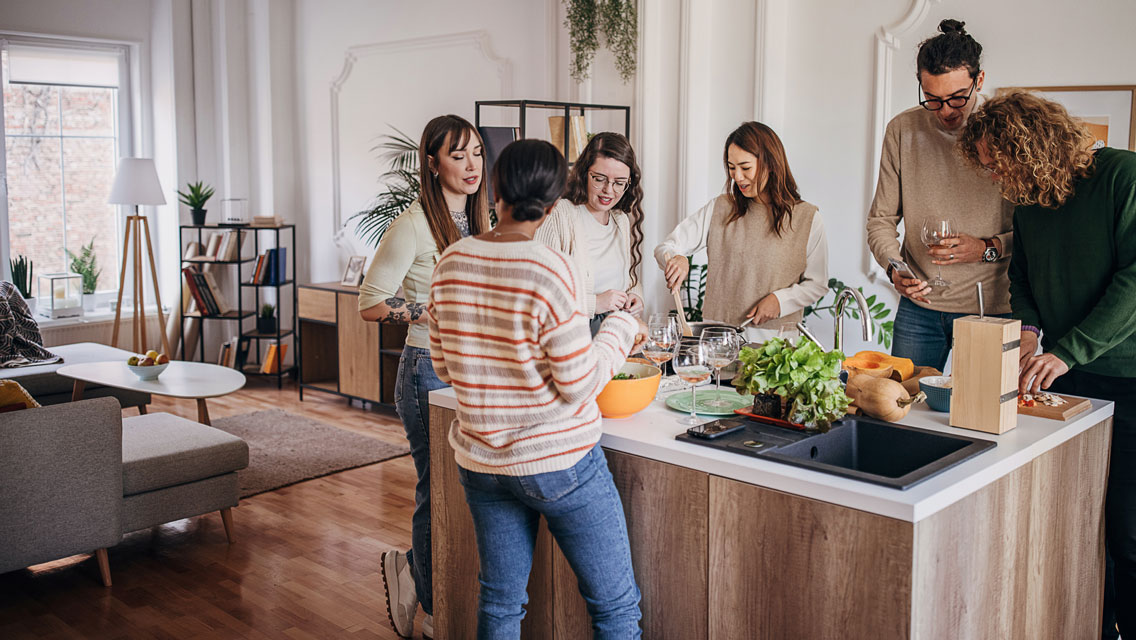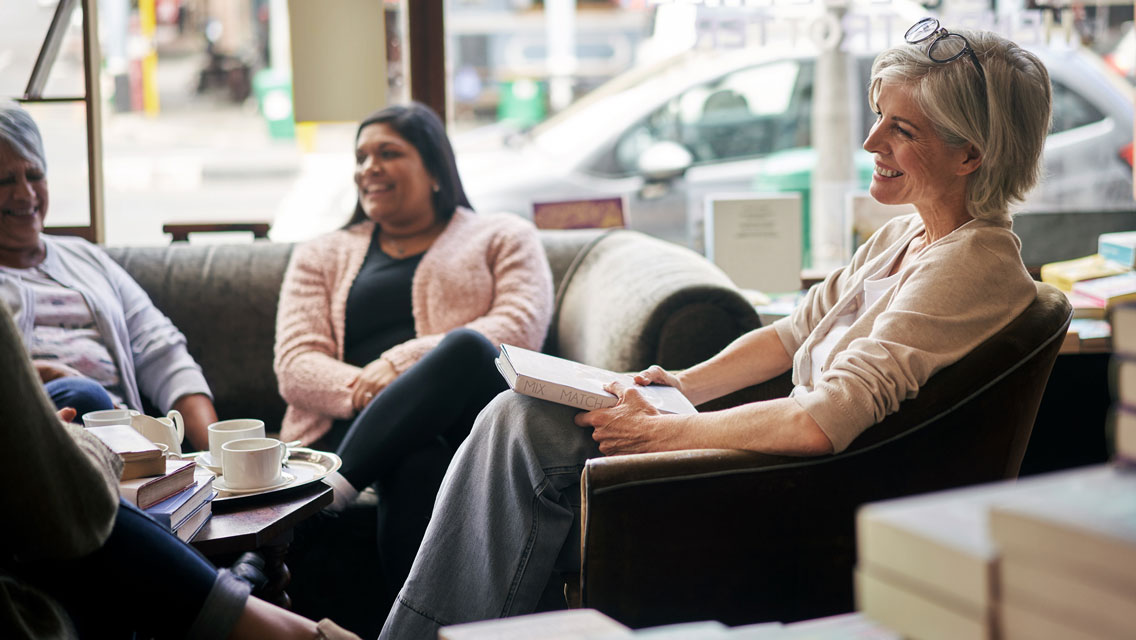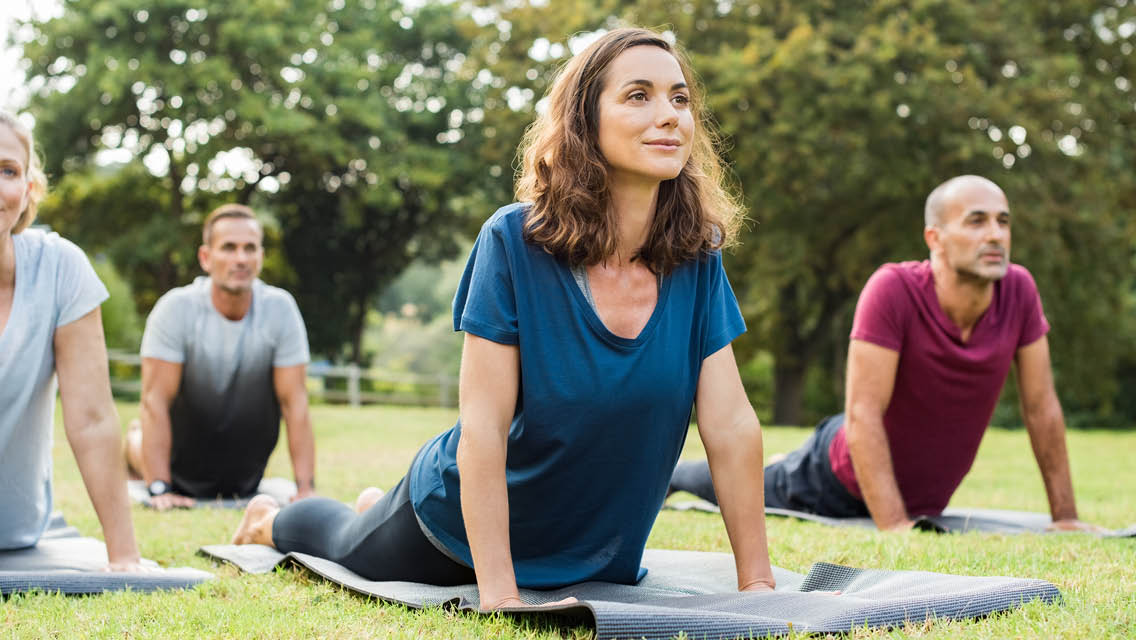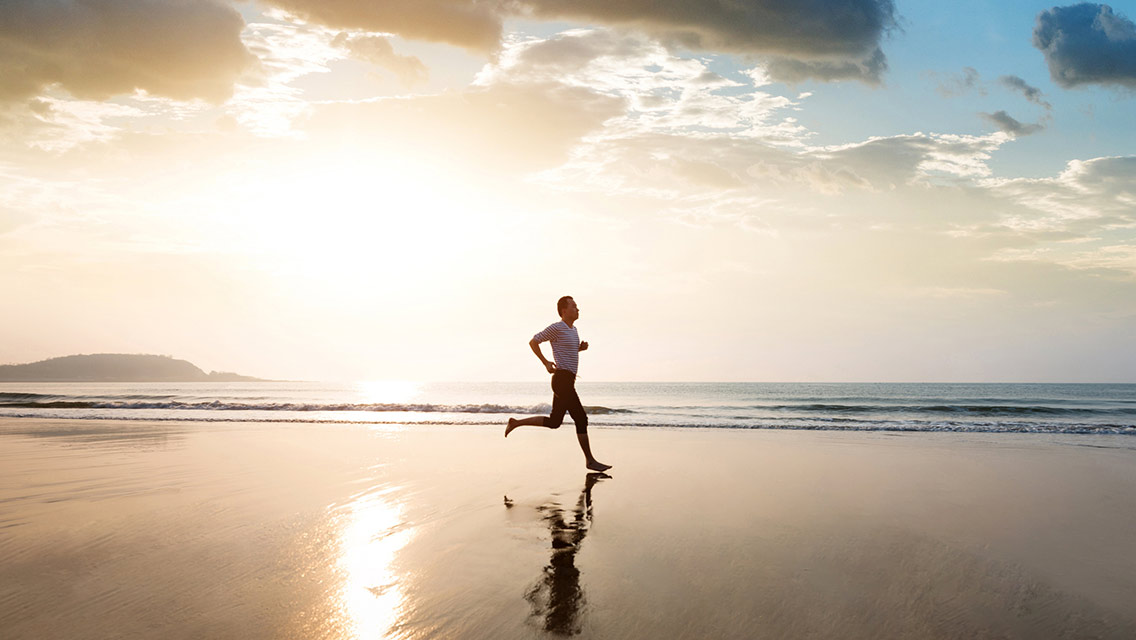Nearing her 40th birthday, novice runner Jean Ackerman watched as the needle on her bathroom scale climbed past 200 pounds. She’d tried to get fit but found it nearly impossible to maintain a workout routine on her own. Realizing she needed support, Ackerman sought strength in numbers. She found it in a group of women who met one night a month to run a few miles together and then gathered at one of the members’ homes for a potluck dinner.
Becoming part of the group, dubbed “Ladies on the Run” (LOTR), helped Ackerman solidify her dedication to running. It also renewed her motivation and helped her achieve some racy results: Over the course of nine months, she dropped 50 pounds, lowered her cholesterol without medication, improved her mood and completed her first half-marathon.
Ackerman and her compatriots are part of a “do-and-dine” trend – one that has been nudging fitness pursuits out of the realm of solitary struggle and into a friendlier neighborhood of supportive community. The concept is simple: Join a group of friends or acquaintances for any kind of workout (a run, hike, bike ride or a fitness class at the gym), then share nourishing food and conversation afterward.
This is not about just grabbing a quick bite on the way home. It’s about developing a social, communal dining ritual that feeds both body and soul.
But this is not about just grabbing a quick bite on the way home. It’s about developing a social, communal dining ritual that feeds both body and soul. It’s about surrounding yourself with a community that supports your active endeavors. It’s about building more fun – and a richer array of rewards – into the athletic process.
Social Work
Making a destination event of an intense workout by following it with a communal meal serves several purposes, and all kinds of athletic tastes. The do-and-dine concept dangles an enticing social carrot in front of reluctant athletes who might otherwise skip their workouts. But it’s also embraced by hardcore fitness enthusiasts who like basking in the afterglow of some tough training with their buddies.
Connecting with other people is vital to our psychological and spiritual health, says Ervin Staub, PhD, a psychologist at the University of Massachusetts at Amherst, whose work focuses on positive social behavior and altruism. “We’re so isolated at our computers, in front of the TV and in our closed work settings,” he observes. “As humans, we have universal psychological needs: the need for security, but also for feeling positive, effective and connected to others. Breaking bread together fulfills some of these basic needs by helping to increase a sense of community and social connection. And it comes from being in the presence of well-meaning others, in whose company you feel safe.”
“Breaking bread together fulfills some of these basic needs by helping to increase a sense of community and social connection. And it comes from being in the presence of well-meaning others, in whose company you feel safe.”
Of course, group physical activity also has a way of creating intimacy and camaraderie. And dining together afterward seems to enhance that effect. For Bea Sides, a postal worker in Omaha, Neb., and a member of Ackerman’s LOTR group, having a monthly do-and-dine running date combines the best of two worlds. “The combination of exercise and socializing builds a support system for all of us,” she says, “and meal sharing extends the time we spend together.”
LOTR’s monthly gatherings also provide an opportunity for members to meet other female runners, most of whom are eager to share training regimens, friendship and recipes. “We discuss our frustrations and concerns,” Sides says. “We also congratulate each other on our accomplishments, no matter how small.”
Homemade Connections
Do-and-dine groups come in all shapes and sizes. There are biking groups that ride 60 miles to destination restaurants in other cities. There are Saturday-morning kayaking clubs that grill lunch when paddlers reach shore. But each has an ingredient – location, time, level of exertion – that makes members want to participate again and again.
Many do-and-dine organizers claim that it’s the setting – in particular, the intimacy and informality of dining in someone’s home – that fosters closeness among participants. For the past seven years, Jyl Auxter, a yoga teacher in Del Mar, Calif., and coauthor of What’s Cooking Within? has opened her home to students for an hour-and-a-half Ashtanga class followed by a home-cooked meal.
These communal evenings help students more fully integrate and spiritually digest their yoga practice, Auxter says. The laid-back meals, which Auxter prepares, feature organic, gourmet dishes, wine and candlelight. Students often provide music. The gatherings embody yoga’s mind-body-spirit philosophy and help introduce students to healthier habits in a way that is both meaningful and fun.
Jennifer Bacon, a freelance technical producer in Oceanside, Calif., who attends Auxter’s yoga parties, says the events have spurred her to reexamine her everyday eating habits. “In the past, I would have gone home after work or class and grabbed whatever,” Bacon says. “Now I’m eating more organic food. I’m less likely to buy fast food, and I’ve slowed down so I can really appreciate sitting down to a meal.”
Monica Zecher, a fitness instructor in Warrenville, Ill., attends a monthly potluck with her yoga classmates. Each month someone volunteers to host the meal at his or her home, choosing a menu theme and coordinating the main dishes. Others bring healthy dishes and recipes to pass around. Against a backdrop of talk about yoga, vegetarian cooking and other shared enthusiasms, notes Zecher, many new friendships are formed.
For Zecher, the sophistication and complexity of the meal are far less important than the home-based location. “A restaurant is just not as socially stimulating,” she says, “and it’s a colder atmosphere than being in someone’s home.”
Seated at a restaurant table, she points out, you typically only get to talk to the two people sitting on either side of you. Especially if you’re new to a group, a home environment can be much more conducive to moving around and striking up conversations. Including everyone in the meal preparation can establish deeper connections in the group.
Body-Mind Bonding
There are both psychological and physiological underpinnings for the kind of synergies that result from combining physical activity and food. “The presence of other people energizes our workouts, and the energy from our workouts adds to our enjoyment of other people,” says Kenneth Savitsky, PhD, a social psychologist and associate professor at Williams College, Williamstown, Mass.
In psychology, this dynamic is sometimes referred to as the “mere presence” effect. “The idea is that the simple presence of other individuals – as opposed to any higher-order thoughts and worries that their presence elicits – creates arousal,” says Savitsky, who likens the high to a caffeine rush.
Part of the high may also come from the adrenaline generated by exercise, which intensifies the feeling of whatever you do next. Your post-workout buzz adds to the social experience that follows, making it even more pleasurable to share food and company.
For Jean Ackerman and others, a do-and-dine group has been the key ingredient in some meaningful life changes. “I attribute my success to having LOTR to look forward to and to having the ladies there supporting me and giving me advice on training and racing,” Ackerman says.
If that kind of community and support sounds like a recipe for success to you, get cooking! Grab a group, get in a great workout, then create a feast to remember.
How to Do the Do-and-Dine Thing
Want to start your own do-and-dine group? It’s best to start small so you can get the hang of the logistics. Begin with just a few core members and then, one by one, ask each to invite a friend – until you get to what you feel is an ideal size. If you need more bodies, you can always post a notice at your gym, community center, yoga studio or local coffee shop.
Here are some other pointers:
- Assess your seriousness. For some do-and-dine groups, a hardcore athletic activity provides the primary focus for the evening. For other groups, the activity is just a low-key preamble to some serious dining and socializing. Whatever the case, it works best if all participants have the same idea.
- Be decisive about dates. Whether you choose a weekly or monthly engagement, you’ll get better attendance by making the time consistent. Scheduling far in advance may boost participation, too.
- Ask for volunteers. On a rotating basis, let members share their homes by hosting the gathering or (for those whose homes aren’t cut out for entertaining) assist a host.
- Get everyone involved. Even those who don’t cook can bring ingredients, chop veggies, grate cheese, stir, toss a salad, pour the wine, mind the music or set the table.
- Choose a dish. Start with a theme for inspiration, or try check out our recipe archives for ideas. Don’t forget some healthy finger foods for folks to snack on while the meal is coming together. They’ll be hungry!
- Respect limitations. Ask guests beforehand about allergies and dietary concerns.
- Make it special. Don’t just sling hash. Create a healthy feast for all the senses. Be mindful of food presentation and the ambiance you create. That said …
- Keep it simple. Avoid making meals so complicated or fussy that they overshadow the main course: good company and conversation!
This article has been updated and originally appeared as “Do & Dine” in the April 2005 issue of Experience Life.




This Post Has 0 Comments